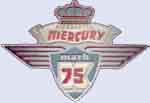In examining Harrison cylinder wall ports on a B Block, the squarish piston port piston skirt windows are rectangular but the cylinder liner ports at the piston skirt windows are not the same shape. These pistons were run in the Harrison block for some time without any adverse affects. But, how could this which looks like missmatch be optimum transfer flow when one would think that the cylinder wall port and the piston port window would have the same shapes? In Anzani engines the match is there to within thousandths.
Can anyone shed some more light on piston skirt port window shapes optimized for Harrisons?


 Thanks:
Thanks:  Likes:
Likes: 






Bookmarks